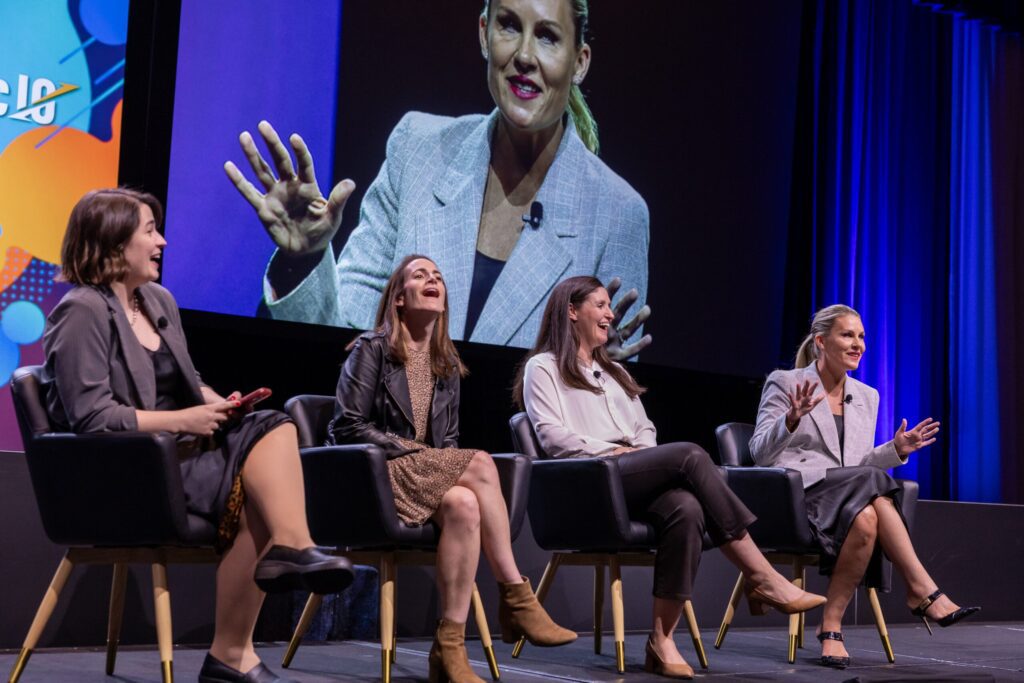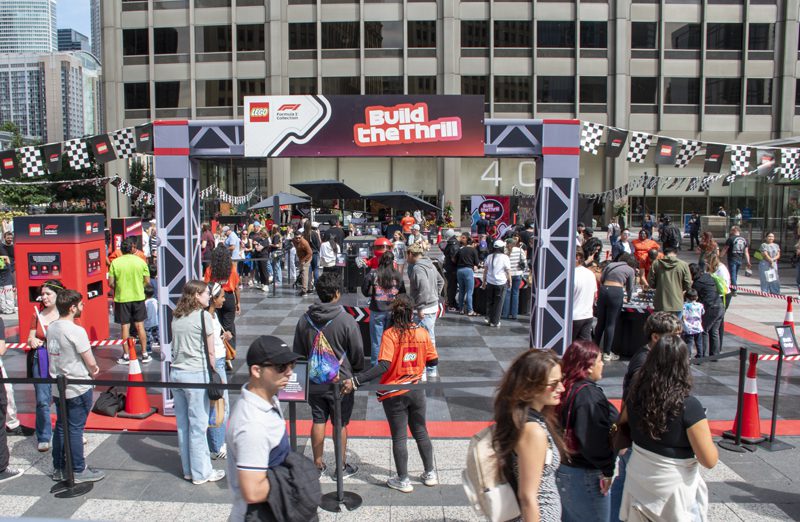REMEMBER THOSE GOLDEN DAYS of sweepstakes and incentives, when winning meant sending in your gum wrappers and a self-addressed stamped envelope to some anonymous post-office box, then waiting four to six weeks for delivery?
And who could forget weeks four through six, anticipating the arrival of the prize, and the feeling of emptiness when only bills were in the mailbox?
Thanks to modern technology, more of today’s generation of contest winners can instantly claim those incentives as fast as their Internet connections allow them.
And the key word is “instant.” With technology evolving in the blink of an eye, the trend for manufacturers and marketers is turning towards digital fulfillment, online fulfillment and fulfillment that can be done by e-mail.
“My generation is used to having hands-on fulfillment, where you collect your wrappers or bottle caps, send away for your prize and wait six to eight weeks for delivery,” says Ron McInnis, president of Los Gatos, CA-based Acquire Inc., a technology and marketing firm. “But my kids just go online and claim their prize. It’s definitely a generational thing.”
Marketing companies and manufacturers are taking advantage of Internet-based fulfillment for sweepstakes, gift cards and premium incentives more than ever. Companies such as Giftcertificates.com saw their e-mail fulfillment increase 20% in 2003.
As digital fulfillment comes of age, marketers and manufacturers see it as a more cost-effective, enticing way to draw the public to a sweepstakes.
“Instant-win is a powerful tool from a marketing standpoint,” says Robb Lippett, COO & general counsel of Farmington Hills, MI-based ePrize. “There’s no need for a consumer to wait six to eight weeks for a box containing their prize to show up.”
While online sweepstakes give consumers a sense of instant gratification, it’s also a win-win situation for marketers and manufacturers, Lippett notes. When the customer enters his or her information online, it goes right into a database, eliminating the need for data entry, therefore saving on labor.
Sweepstakes that allow a prize to be redeemed online, such as Pepsi’s recent Pepsi iTunes Music Giveaway, enable marketers to do away with physical fulfillment, reducing costs even further.
Additionally, this allows marketers to reach customers who are looking for incentives at the last second, says Michael Ahern, CEO of Seattle-based Giftcertificates.com. “It positions us in markets that we couldn’t serve before, like the last-minute shopper.” Ahern notes the annual last-minute rush caused by such holidays and events as Administrative Assistants’ Day. “We’ve made it so easy for the customer to use. If a company is doing incentive cards, [it] can upload an e-mail list to our site and each of those people has the gift card e-mailed to them. We offer the ability to make less work for the person administrating the project.”
Giftcertificates.com customers can enter their own data, but Ahern said there is still a need to place the orders by phone, which means there is still a need for a back-office staff.
GiftCertificates.com’s bestseller is its SuperCertificate, a universal gift certificate good for original gift certificates from any of the hundreds of merchants offered, ranging from Bloomingdale’s to Boston Market. And when SuperCertificates are redeemed online, it means GiftCertificates.com also has more data and statistics it can use to help win more campaigns.
Consumers do not even need to log into a Web site. For example, Acquire can package incentive CD-ROM programs with products ranging from consumable goods to phone cards, which when inserted into a computer, opens a Web site for the user. This allows Acquire to develop detailed statistics on disc insertion rates, viewing metrics, and click-thru rates.
McInnis says that the tracking tells its clients who went to the Web site and when, creating less margin of error for the manufacturers since the information is going directly into a database and it does not rely on consumers filling out fulfillment cards and mailing them in.
Through digital fulfillment, marketers can ask the customers questions as well, which means channeled communication at a low cost.
“With a simple sweepstakes registration, you’ve got an effective one-click consumer acquisition tool setting up a communication channel to build customer relationships and retention,” McInnis says. “And best of all, the data is fully accessible and manageable from any Web location at any time.”
McInnis notes that digital fulfillment also allows manufacturers to essentially sample their goods online, and potentially generate revenue. As an example, McInnis said a CD-ROM could be packaged with a wireless phone service plan, which allows users to download such virtual prizes as ringtones and screen savers or change service plans.
“While it’s a physical giveaway, it can be a revenue generator for the phone company,” McInnis says. “These kind of incentives are part of the future, but they will also be able to generate revenue. Fundamentally, it’s also sampling. You’re letting your consumer try it so they’ll buy additional stuff.”
Complementing the original
But the use of digital fulfillment does not mean an end to traditional fulfillment for incentives and sweepstakes. Certain online sweepstakes, such as SoBe’s current Lizard Liberation, require an on-package code to be entered online, but have prizes that cannot be printed out. Lizard Liberation winners can claim downloads from Buymusic.com, but the eight grand-prize SoBe Jeep Wrangler Unlimited vehicles can’t be downloaded and driven around town.
So the Norwalk, CT beverage maker is using Archway Marketing Services, Maple Plain, MN, for its snail mail fulfillment. Music download fulfilment is being handled directly by contest partner Buymusic.com.
“Consumers dig downloads. They love it,” says Mike Joyce, SoBe’s director of integrated marketing. “Any way you look at it, digital fulfillment is a great value. It is an easy thing to communicate to consumers and the gratification the customer gets is more appealing. It’s an easy thing to fulfill as well.”
The last thing SoBe wanted to do with its first ever sweepstakes, Joyce says, is make it difficult for the consumer to comprehend. All that does is turn customers off.
“The fact they chose to buy our product is their way of thanking us. We want to reward the consumers for buying our product, and something as simple as digitial fulfillment helps us to take care of our core customers,” Joyce says.
Joyce added that the partnership with Buymusic.com makes a good match because SoBe has a diverse customer base, and Buymusic.com offers a broad portfolio of downloads. If the prizes do not mesh with the product, he adds, contest participation will be weak.
EPrize points out a Fall 2003 sweepstakes it ran for high-end Internet retailer Bluefly Inc. as an example of one which required not only traditional and internet fulfillment, but needed to be a fit for all parties involved. In this sweepstakes, Bluefly gave away 24 pairs of Manolo Blahniks, shoes featured on and made famous by the cable show Sex And the City. The company leveraged the show’s last season to generate 500,000 online entries in the first 20 days of the contest.
“You cannot just make a contest plug & play because it’s easy to do,” Lippitt says. “You have to make them relative to the product, enticive, easy to use and easy to be received by the public. In some instances, a digital contest will not be the right tool.”
McInnis believes physical fulfillment will still be around for a long time, even as more and more contests and incentive programs shift to the Internet. He says he has been working with movie companies for a long time, and notes there is a balance between virtual prizes and promotional keepsakes like jackets, t-shirts and coffee mugs.
“Consumers still want something that will be around for a long time, something they can hold in their hand like it was a trophy,” Ahern says.
 Network
Network


